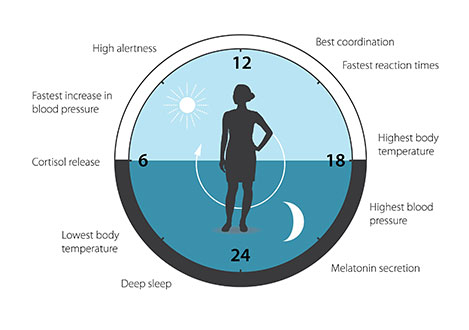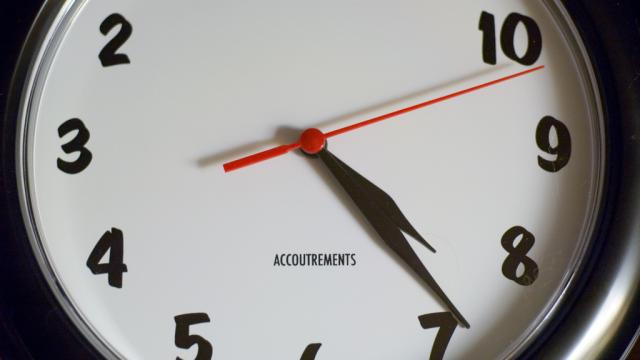The human body is like a computer in a whole lot of ways. It has a processor, it has memory, it needs energy to run, it can solve problems, and, uh, it sees its fair share of porn. But it also has a clock — one whose mechanics have only been delved into fairly recently.
Image: RBerteig/Flickr
The Nobel Assembly at Karolinska Institutet awarded this year’s Nobel Prize in Physiology or Medicine to Americans Jeffrey C. Hall, Michael Rosbash and Michael W. Young “for their discoveries of molecular mechanisms controlling the circadian rhythm”. Thanks to some tinkering and peering into the ubiquitous Drosophila melanogaster fruit fly’s genetics, they figured out some of the genes and proteins responsible for making your clock tick.
We now know a lot more about the circadian rhythm, and subsequent scientists have expanded the research, finding similar proteins in humans (though there’s still a lot of work to do). Plenty of other scientists have now entered this field. But the work of these three laureates set the stage for all of that, by deconstructing and putting back together the tiny gears of the biological clock
Here’s how they did it.
The early 1980s was a much different time for DNA research — there was no human genome project, no CRISPR, and the computers used to evaluate DNA research were a lot slower. Science was slower in general. The papers were easier to read.

Image: NobelPrize.org
Scientists knew a whole lot about biological rhythms back then, but “almost nothing was known” about the molecular mechanisms behind it, according to one 1984 paper in Cell. But even earlier in the 1970s, a different team of researchers realised that a sequence of DNA called the period gene could be mutated to throw the fruit fly’s clock out of whack, with consequences including altering the way the flies moved around and the sound of their mating call. Robash and Hall were able to fix the mutated flies and restore normalcy to their circadian rhythm in that 1984 paper. Young and his team were able to isolate the thousands of base pairs (the letters that make up the words of the DNA instruction manual) responsible for this gene.
Once the researchers had isolated the gene, they had to figure out the actual proteins that did the work. DNA, after all, is just the instruction and not the worker actually carrying them out. Another kind of genetic material called RNA needs to translate the DNA, which is read elsewhere in the cell to create the proteins. Robash, Hall and their team’s further work showed that the amounts of RNA in the fly cells seemed to fluctuate based on the time and amount of light the flies were exposed to. Since RNA codes for proteins, that meant that some corresponding protein called PER would fluctuate over time as well, and could have some importance over the circadian rhythm. More importantly, this meant there must have been some internal feedback loop responsible for the clock. Your life has a lot of feedback loops, like how you wait to answer your emails until there are too many, you freak out and check or delete everything, then let them pile up and the cycle continues.
But the scientists still needed to figure out why PER was changing cyclically — it was as if they had an inbox full of emails (the proteins) sent from the period gene, but no one to check and respond to them and no employer’s time clock to regulate the checking. Young and his team later discovered that another protein that they called timeless was the email checker, binding to PER so, after it built up too much, it could flood the nucleus and shut off the period gene. Another paper introduced doubletime, the protein that delays the timing so the timeless protein can clear the PER build up at, well, the right time.
The work of these three earned the three the Nobel Prize, although the field is still full of scientists trying to further understand the intricacies of the circadian rhythm.
The prizes will continue tomorrow with the Physics Prize, and then the next day with the Chemistry Prize.
